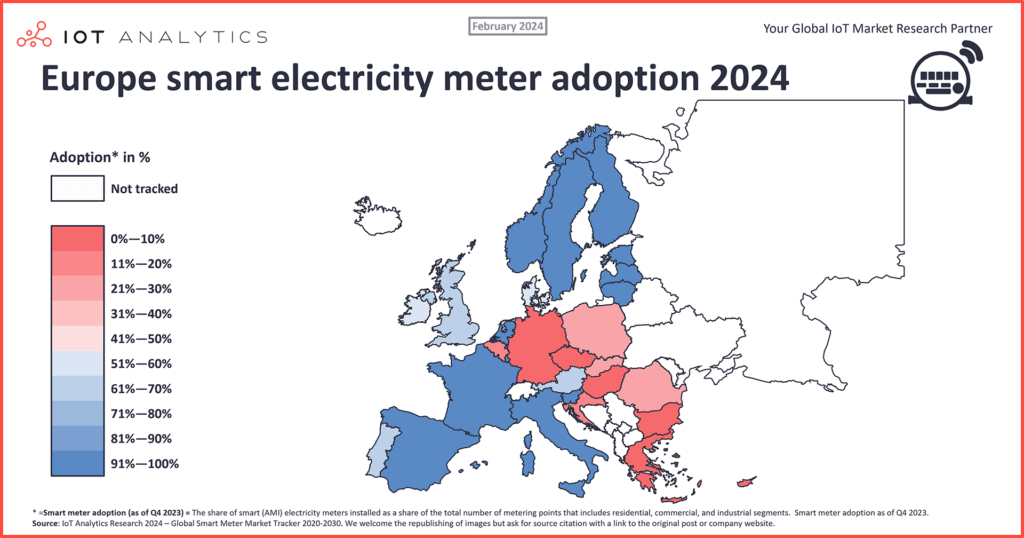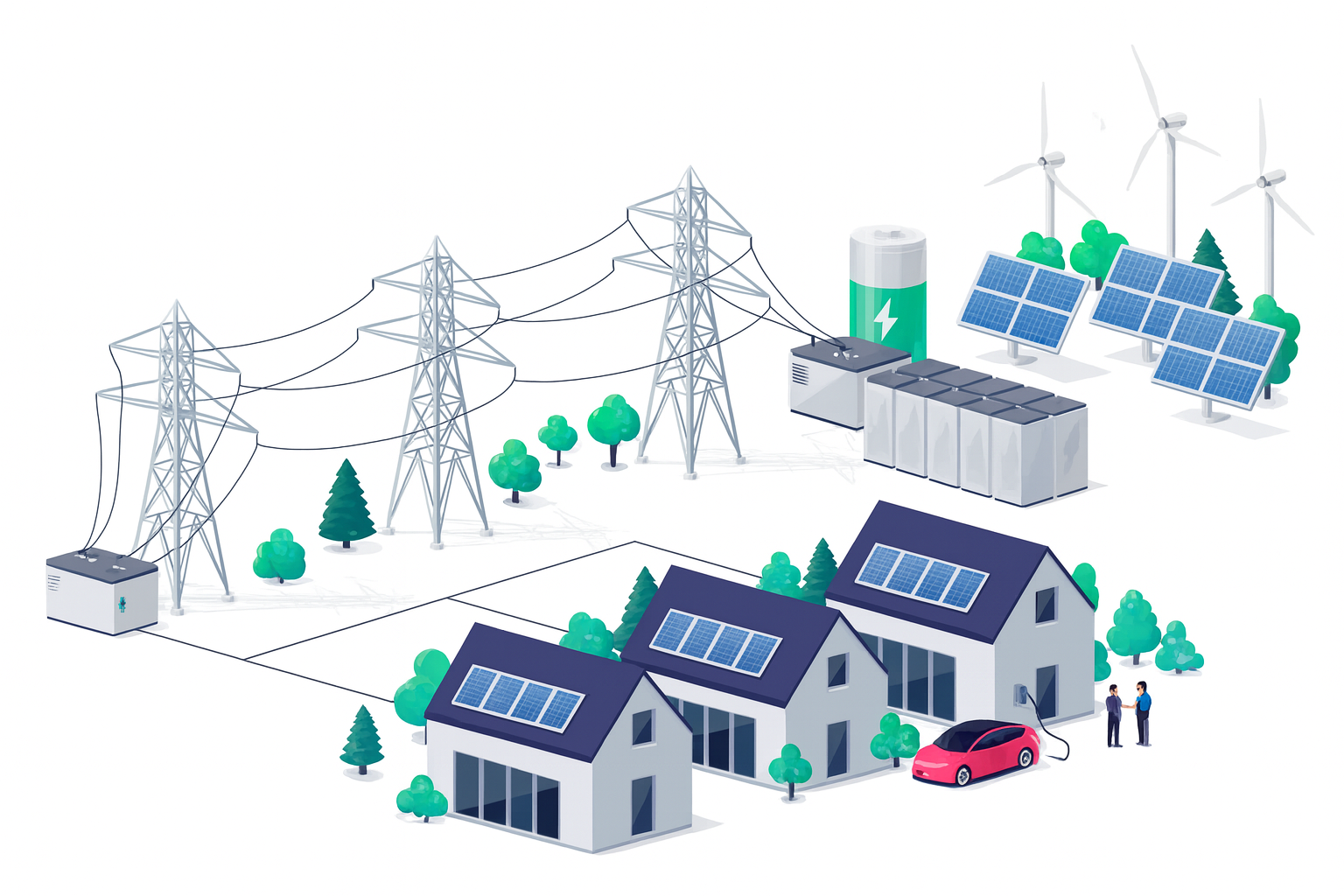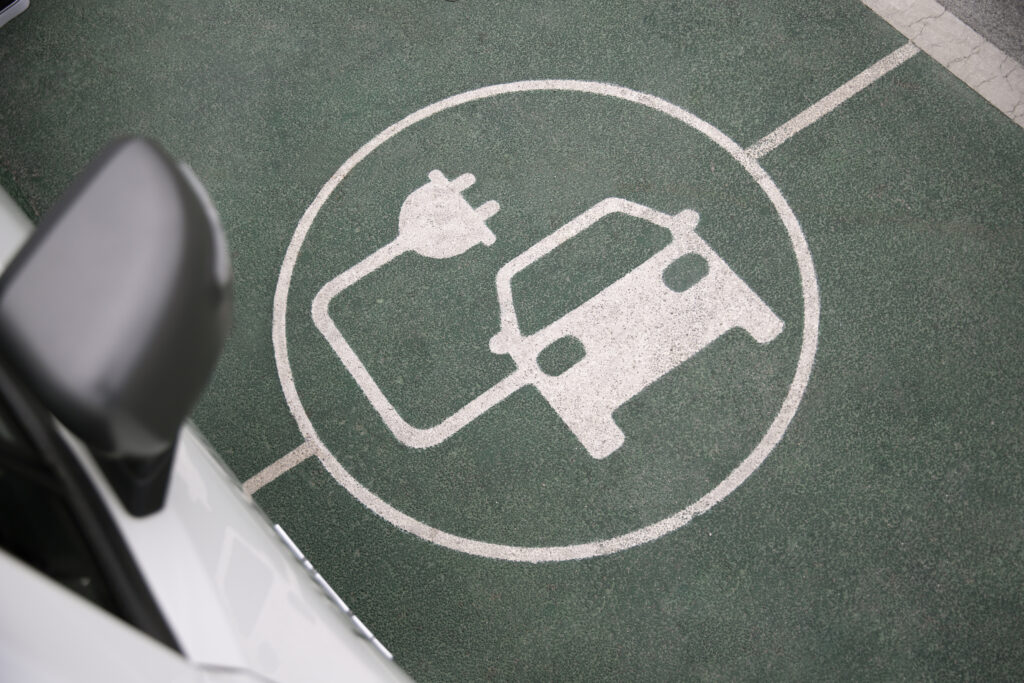The data revolution is hiding in plain sight.
The rollout of smart meters across Europe is generating a torrent of data. For grid operators, the operational benefits are clear. But for utilities, the real untapped opportunity lies elsewhere — in marketing and customer engagement.
This isn’t just a hardware upgrade. It’s the rise of advanced metering infrastructure (AMI) and a complete redefinition of what customer insight looks like.
AMI replaces a single monthly billing read with as many as 2,880 data points per customer, per month (based on 15-minute intervals). That’s a high-definition, real-time picture of household energy behavior.
The question isn’t if you should use it. It’s how fast you can turn it into customer value — and discover how to use smart meter data for marketing more effectively.
The data divide across Europe.
Smart meter adoption across Europe is inconsistent, creating a fragmented landscape of data availability. This uneven penetration, tracked by industry experts at LCP Delta, Eurelectric, and in official European Commission reports, directly impacts which data-driven strategies are viable.
As illustrated by the “Europe smart electricity meter adoption 2024” map below, a clear data-divide is visible across the continent:

- High Penetration (Mature Data Markets): Countries highlighted in dark blue, such as Spain, France, Italy, and the Nordic countries, are at 91-100% penetration. These markets are fully data-enabled and ready for sophisticated services.
- Mandated Growth Markets: Nations like Poland are in the 31-40% range, actively rolling out meters to meet legal targets. Poland is required to equip 80% of consumers by the end of 2028, creating a clear, high-growth opportunity for scaling new data-driven services.
- Lagging Markets: Germany, long-cited in industry analysis at around 15% penetration, and the Czech Republic, which official reports placed under 1%, are now accelerating after years of delay.
Where your market sits on this curve determines how you should design your smart data marketing strategy — and how to use smart meter data for marketing success.
What smart data actually unlocks.
Smart meters don’t just record usage — they reveal patterns, habits, and intent.
With traditional analog meters, you saw one number per month. With AMI, you can see how and when energy is used, unlocking the power of inference and the full AMI data value.
For example:
- A new, consistent, high draw at 2 AM? That’s almost certainly an EV charger.
- A greater winter spike than previous years? Likely the heating source has moved from gas to electric (i.e. a heat pump installation)
Platforms such as Itron smart meter analytics can perform “load disaggregation” — breaking down total usage to infer device ownership, lifestyle, and efficiency levels.
Understanding how to use smart meter data for marketing begins right here — turning raw information into insight that drives engagement.
The two-sided value of AMI data.
Smart meter data isn’t just an operational win. It’s a dual-value asset for both customers and utilities — the essence of AMI data value.
For customers: clarity, control, and savings.
- Visibility. Giving customers access to their own data lets them see exactly where their money goes.
- Smarter decisions. In its benchmarking reports on smart meter deployment, the European Commission found that consumers who actively engage with their consumption data can achieve average energy savings of around 3%.
- Access to better tariffs. Dynamic or time-of-use (ToU) rates depend on this visibility — the data is the gateway.
For utilities: segmentation, targeting, and personalization.
- Beyond demographics. Replace guesswork with verified behavior. Stop targeting by postcode; start targeting by usage.
- Hyper-personalization. Deliver the right offer to the right household at the right moment. Utilities using this approach consistently see higher satisfaction and retention.
- Efficiency. Precise targeting boosts campaign conversion and cuts marketing waste.
That’s the heart of how to use smart meter data for marketing — transforming energy providers into data-driven relationship builders.
Five ways to turn smart data into marketing impact.
We believe that the timing couldn’t be better. Customers are adopting new technologies at record speed.
Analysis from energy bodies like SolarPower Europe shows around 50 GW of new solar was installed across the EU in 2024 alone. This is happening alongside a massive policy push, with the official REPowerEU plan targeting 10 million new heat pumps by 2027. At the same time, the European Automobile Manufacturers’ Association (ACEA) reports that battery-electric vehicles now account for over 15% of all new car sales in Europe.
To reach these high-electrification, high-value households, data-driven segmentation isn’t optional, but essential.
1. EV upsell and tariff optimization.
Signal: Homes with significant and relatively sudden load increases.
Action: Offer EV-specific tariffs and smart charging to optimize that new consumption.
2. Heat pump efficiency cross-sell.
Signal: Large winter consumption jumps versus previous years, or new sustained load patterns that map to typical heat pump load curves.
Action: Promote efficiency upgrades, insulation services, or smart heating optimization.
3. Targeted solar PV promotion.
Signal: New drops in consumption that align with sunny periods of the day.
Action: Market solar battery packages to offset evening peak load and reduce grid reliance. Ensure households are aware of any feed in tariff options.
4. Dynamic pricing education.
Segment: Customers peaking during expensive grid hours.
Action: Educate on ToU tariffs and send easy, data-based tips to shift usage and save.
5. Green brand positioning through social proof.
Segment: All customers.
Action: Share “compare-to-peers” insights (“You’re in the top 20% most efficient homes”). This builds brand trust and loyalty.
Podero’s relationship with smart meter data.
We don’t process smart meter data directly, but smart meter adoption is a key enabler for Podero-powered smart device services.
Analog meters show total usage. Smart meters show when that energy is used — unlocking accurate billing for dynamic tariffs, flexible load management, and automated optimization.
As on of our Podero experts highlighted:
“Our service can still function without smart meters, but it doesn’t make much sense — the utility can’t measure or bill the benefit.”
In some cases, Podero technology also integrates with meters embedded in inverters or batteries. They aren’t billing devices, but they provide critical real-time data for system optimization.
The future of utility marketing is personal.
Smart meter data is the new “marketing currency” for the energy sector. It lets utilities move from commodity pricing to personalized partnership.
Those 2,880 data points per customer per month aren’t a billing burden — they’re the key to relevance, retention, and revenue.The utilities that act now — mastering how to use smart meter data for marketing — will lead the next decade of energy engagement.












